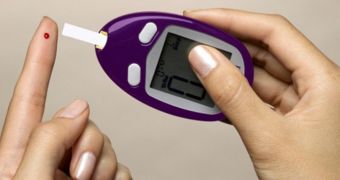A paper published in the New England Journal of Medicine this past June 15 documents the use of a so-called bionic pancreas to help type 1 diabetes patients keep their blood glucose levels in check.
According to researchers with Boston University and Massachusetts General Hospital, this device both keeps tabs on blood glucose levels, and delivers appropriate treatment, should these levels go off the rails.
As detailed in the New England Journal of Medicine, the bionic pancreas relies on a sensor fitted inside a tiny needle to pin down fluctuations in blood glucose levels. The monitoring is done in real time, and the data is accurate.
In order for this sensor to be able to monitor variations in glucose concentrations in the blood, the needle carrying it need be inserted under the skin, EurekAlert informs. Still, specialists say this causes no major discomfort to a patient.
The same source tells us that, should a type 1 diabetes patient's blood glucose levels go haywire, the device takes care of the problem by providing insulin and a counteracting hormone known as glucagon. The treatment is delivered via automatic pumps.
This innovative system to control blood concentrations of glucose in the case of type 1 diabetes patients has until now been tested on 20 adults and 32 youths who carried it around with them for five days in a row and were closely monitored during this entire time.
It has thus been discovered that, when compared to type 1 diabetes patients who rely on fingerstick tests and regular pumps to keep their condition in check, those fitted with such a bionic pancreas are likely to experience fewer highs and lows in terms of blood glucose levels.
“The bionic pancreas system reduced the average blood glucose to levels that have been shown to dramatically reduce the risk of diabetic complications,” says study co-first author Steven Russell, M.D., Ph.D., with the Massachusetts General Hospital.
“The performance of our system in both adults and adolescents exceeded our expectations under very challenging real-world conditions,” adds study senior author Ed Damiano, Ph.D., and an associate professor of biomedical engineering at Boston University.
Steven Russell, Ed Damiano, and fellow researchers say that they wish to continue their work, and they hope that it will not be long until they manage to roll out clinical trials intended to test this technology on more than just 52 patients.
They argue that, although finding a cure for type diabetes is what the scientific community should focus on, the fact remains that, until such a cure is discovered, improving on existing treatment options must remain a priority.

 14 DAY TRIAL //
14 DAY TRIAL //